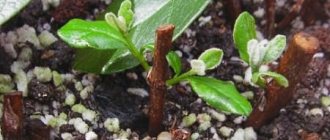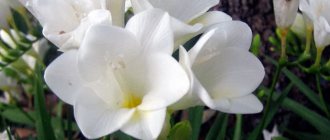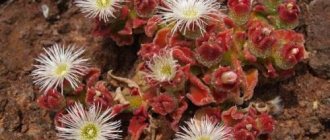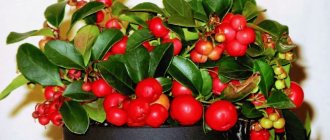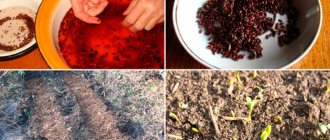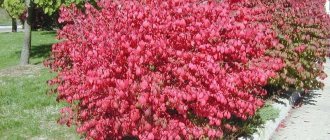Hello my golden ones. I told you that we are buying conifers - it was like looking into water. I continue to delight you with our new products. Today we came home like driven horses, but very pleased with ourselves. And you see the result in the photo.
I ask you to love and favor - Picea Glauca Konica. If you have not yet heard this name, you may have encountered this plant under the name Canadian spruce or gray spruce. Russia can, in principle, boast of how well pizza has taken root in it. And even if it is not as decorative as, say, the prickly spruce, which is much more common in Russia, especially in the middle zone.
Spruce Glauca conica: botanical description of the plant and optimal conditions for growing
Canadian spruce, gray spruce, glauca conica - all these are names of the same species. Under natural conditions, the height of this tree is about 20-30 meters. It is characterized by a dense cone-shaped crown, the diameter of which, under favorable growth conditions, can be over 1 meter.
The lifespan of this tree in some cases can exceed 300 years. Typically, the branches of young spruce trees are directed strictly upward, but during the aging process everything changes and therefore older specimens of these trees are distinguished by branches directed downward.
The needles of this species have a bluish-green color and a light aroma of blackcurrant leaves. At the moment, over two dozen species of this tree are known, most of them were bred artificially.
Using dwarf spruce in the landscape
Konika spruce is an ideal tree for creating landscape compositions. Slow growth allows the tree to be used even in a flower bed, rock garden, or as a frame for paths. Planted as a repeating element in front gardens and ridges. The shape and color of the crown fits perfectly with any flowers and shrubs.
In the design of mixed-style gardens, conika spruce emphasizes the beauty of neighboring plants or itself acts as the center of the group.
Growing Konika spruce on the site will not take much time and will not create much trouble if you approach this issue correctly. The correct location of the tree accentuates the sophistication of the composition.
Growing conditions
The conditions for growing this Christmas tree in open ground are not much different from the conditions for growing the common spruce in our country. The basic requirements of glauca conica are as follows:
- A well-lit place, but this spruce can also grow quite successfully in light partial shade.
- The soil for growing spruce must have a slightly acidic reaction. This can be achieved by adding a sufficiently large amount of peat during planting.
- This species does not tolerate constantly polluted air. Therefore, it is useless to plant it in an area next to which there is a busy highway.
- Places with close groundwater are not suitable for growing picea glauca.
Picea is a rather demanding tree, so if even one of the conditions is not met, it will not be possible to grow a beautiful and healthy tree.
How to care for Pizza glauca?
Well, now, in the old fashioned way, let’s move on to the intricacies of caring for pizza. Let's start off with. That this plant is intended exclusively for growing on the site. Moreover, it needs a well-shaded growing area. In principle, it can tolerate full shade, but provided there is sufficient lighting, it will still grow much more cheerfully.
A sufficient level of air humidity and soil fertility indicators are very important for it.
Although it should be noted that pizzaa is very hardy . It easily tolerates slightly waterlogged soils. And with all its negative reaction to excessive air pollution, it is still successfully grown in the city. In general, the main thing is to know all the subtleties and nuances of cultivation in order to know how you can compensate for this or that negative factor.
By the way, if you planted a pizza , but it still doesn’t want to look good, being capricious and picky, you shouldn’t sound the alarm bells of panic - this is of no use. A somewhat stunted appearance is a completely natural phenomenon for Picea, which goes away with time. We smoothly moved on to the issues of transplantation, by the way. She looks bad because she can't stand the transplant. No, the picea will survive it, but with difficulty and a huge expenditure of strength and energy, so you should immediately clearly decide where you will plant it, so as not to later turn the tree back and forth.
By the way, unlike other conifers, picea will not tolerate the proximity of groundwater, so please take this into account when planting, otherwise your conifer will die for a sniff of tobacco.
You should not trample or otherwise compact the soil where Canadian spruce trees are planted - they don’t like it, and they simply won’t forgive you for treating them like that.
Is your soil well-drained and loamy? Great! Ideal for pizza! No? Draw conclusions and take action.
If the soil is also fertile, then the spruce root system will develop fully, so there will be no problems with rooting at all.
The plant does not need fertilizing at all - the main thing is that the soil itself is sufficiently nutritious. If you want to support the plant to the maximum, you can fertilize the pizza during the planting process.
And now about humidity, which is extremely important for any form of blue spruce. And we are talking specifically about soil moisture, not air. If the soil is too dry and watering is insufficient, do not expect good things.
Criteria for choosing a tree for growing at home in a pot
Most Canadian Christmas trees are purchased on the eve of the New Year holidays. In the store you can find them under the name mixed coniferous plants. According to the manufacturers' plans, they are intended only for use as a living Christmas tree; it will not be possible to keep them as a home tree without creating special conditions.
What you should pay attention to when buying a Christmas tree:
- You should not purchase trees decorated with various sparkles and artificial snow. In most cases, all decorations severely damage the needles, which significantly reduces its chances of further survival.
- It is also worth paying attention to the ratio of the size of the pot to the size of the crown. If the tree is quite large and the pot is very modest in size, then most likely this Christmas tree was grown hydroponically and it is unlikely to be preserved at home.
- When purchasing, you should carefully consider the condition of the root system. Ideally, the entire earthen ball should be tightly entwined with roots.
Diseases and pests
Coniferous plants are not immune to diseases. It is necessary to carry out processing in a timely manner. A tree can get sick from non-compliance with planting and care rules:
- Falling needles. Causes: lack of moisture, sunburn.
- Root rotting. Reasons: waterlogging of the earthen coma, stagnation of water.
- Tracheomycosis. The needles turn red and fall off. The disease cannot be cured. The plant must be dug up and burned.
- Rust. Red growths form on the branches and trunk. The needles turn yellow. The drug "Vectra" is used.
- Schutte. The needles become covered with a white coating, then turn black and crumble. In early spring, the plant is sprayed with a 1% (100 g per 10 liters of water) solution of copper sulfate.
If you follow the planting rules and simple care, the tree will decorate the area all year round.
You can buy spruce in the Leroy Merlin store using the link.
Spruce Glauka konica: how to provide care at home
Growing coniferous plants at home is quite difficult, but still possible. They just need to create the right conditions for this.
Temperature, lighting and humidity
You can save a Christmas tree at home only if you have a sufficiently cold place. In nature, conifers have a dormant period in winter. Similar conditions must be provided at home. For example, for the winter, a pot with a Christmas tree can be taken out to a cold loggia or placed between window panes.
When keeping spruce at home, the principle applies: the higher the temperature, the less chance the spruce has of survival. It is best if the temperature throughout the winter is no more than +3-5°C.
High air humidity is another essential condition for the successful maintenance of spruce. Needles are very sensitive to dry air . Therefore, the tree needs to be constantly sprayed. You can also place a small container of water next to the pot.
All conifers are quite sensitive to direct sunlight. Therefore, the pot should be placed on the north, east or west side of the house. The ideal option would be direct diffused light. To prevent the Christmas tree from growing one-sided, it is recommended to periodically turn the other side towards the light source.
Watering and fertilizing
The plant needs to be watered moderately; high humidity is only necessary for the crown; it is detrimental to the roots. To water as little as possible, the surface of the soil in the pot can be mulched and covered with a piece of paper cut to the diameter of the pot.
In winter and immediately after transplanting, you cannot feed the spruce. Feeding should be applied during the period of intensive growth . To do this, you need to use fertilizers specifically designed for coniferous crops. You cannot use other types of fertilizers, as they change the acidity level of the soil.
Additionally, in the spring, it is recommended to treat the crown of the tree with growth stimulants. This will speed up the process of growing new needles. For these purposes, for example, you can use "Epin"
Transplantation and propagation
The first time the spruce is replanted immediately after purchase. This is due to the fact that the soil in the pot is not suitable for long-term cultivation. Spruce of this species is quite demanding on the composition of the soil mixture. Therefore, for replanting you need to purchase a special substrate for growing coniferous plants.
It should also be taken into account that the recovery period of damaged roots can take up to 3 months. Therefore, if the tree was purchased in winter, then replanting should be postponed until spring.
Very often, immediately after transplantation, the tree takes on a rather deplorable appearance. This is how it reacts to the stress that arose during the transplant. To help the Christmas tree cope with this, various growth stimulants are used.
Rules of care
Young seedlings look ugly, they begin to grow upward, but later the crown expands and takes on the correct shape (does not need pruning).
In the first year, the tree needs watering and shading from the bright sun and spraying of the crown. It is advisable to make a spraying system and turn it on every 6 hours. In the spring, the needles are treated with the growth stimulator "Epin". In dry summers, adult spruce trees are also watered.
Starting from 3 and 4 years of age, the tree is fed with special complexes (at the root) once a month - from early spring to mid-summer. In the future, the plant prepares for a period of winter dormancy, watering is reduced, and fertilizers are not used.
It is important to loosen the soil in a timely manner (shallow), remove weeds and old twigs. In October, the root circle is sprinkled with a layer of mulch 8-10 cm to avoid freezing of the roots. In winters with little snow, an additional snowdrift is made.
Crown Glauka konica does not need shelter.
How to extend the life of konika spruce at home
To extend the life of a Christmas tree purchased for the New Year holidays and give it the opportunity to survive until it is planted in open ground, you need to do the following:
- Choose the coolest place in the house.
- Periodically spray the plant with cold, preferably melt water.
- Do not allow the substrate in the pot to dry out completely.
Spruce Glauka konika: planting and care in open ground
Spruce of this species is not intended for year-round growing indoors, so as soon as possible it should be planted in open ground. This is best done in the spring, but if necessary, you can also use autumn planting.
So that the spruce takes root in the new place as quickly as possible. During transplantation, the earthen ball should not be destroyed. You just need to transfer the tree from the pot into a pre-prepared planting hole.
It is advisable to choose a landing site near the walls of houses, fences or near other structures. In an open place, sensitive needles are easily damaged by sunlight.
For planting, it is best to choose a cloudy rainy day . This will help avoid unnecessary stress from moving to a new location. Immediately after planting, it is recommended to shade the Christmas tree for a week with covering material. The soil surface under the tree is mulched. As mulch, you can use pine litter brought from the forest or, in its absence, peat.
Further care for glauca in open ground involves periodic watering. It is especially important to prevent the soil from drying out in the first year of cultivation. During the first wintering, it is recommended to cover the young spruce. To do this, you can purchase either a special cone-shaped shelter, or simply wrap the crown and trunk of the tree with several layers of covering material.
Problems when growing a Christmas tree in a pot
The main problems that you may encounter when growing conics in a pot are the following:
- Yellowing and shedding of needles . This may be due to the temperature of the tree being kept too high in winter. This can also occur as a result of insufficient ambient humidity.
- Needle burns. Most often occur in the spring. To prevent this, the Christmas tree should be shaded or moved to a less sunny window.
- Shedding of green needles. It is observed when the temperature rises sharply or when the earthen clod becomes too dry.
Variety varieties
The biological feature of the low-growing Canadian spruce Konica, which contributes to the natural restoration of the variety, has led to the emergence of new dwarf hybrids. How this happens remains a mystery.
Varieties that appeared as a result of natural mutation:
- Picea glauca conica Daisy`s White. Slow growing variety. It is distinguished by a change in the color of the needles from yellow to white; the needles turn green after six months.
- Picea glauca conica Alberta Globe. Grown since 1967, Alberta Globe is a dwarf variety with a spherical crown. At the age of 10 years, the crown diameter is about 30 cm. The maximum height of an adult plant is 90 cm, and the crown width is 120 cm. Resistant to frost. Awarded a gold medal in 1968.
- Picea glauca conica Gnom. A small shrub with gray-green needles and a narrow pyramidal crown, reaching just over a meter in height.
- Picea glauca conica Blue Wonder. It is characterized by rapid growth: at 5 years it grows up to 20 cm; at 20 years old it reaches 2 m in height and 80 cm in volume; the needles are blue-green. The parameters depend on the habitat and growing conditions.
The popularity of coniferous trees in the landscape, frost resistance and ease of care encourage gardeners to create hybrid forms. Every year, the assortment of nurseries is replenished with mutant varieties and breeding products.
The Maigold variety (Picea glauca conica Maigold) is widespread in Russia. Discovered in 1979 in Belgium. The character and appearance are similar to Daisy White. In our climate, a 10-year-old tree reaches only 80 cm. Based on the same data, a new breeding variety Sun on the Sky (Picea glauca Sun on the Sky) was developed.
Very popular coniferous trees are Picea glauca Sander`s Blue, Alberta Blue and various hybrids.
